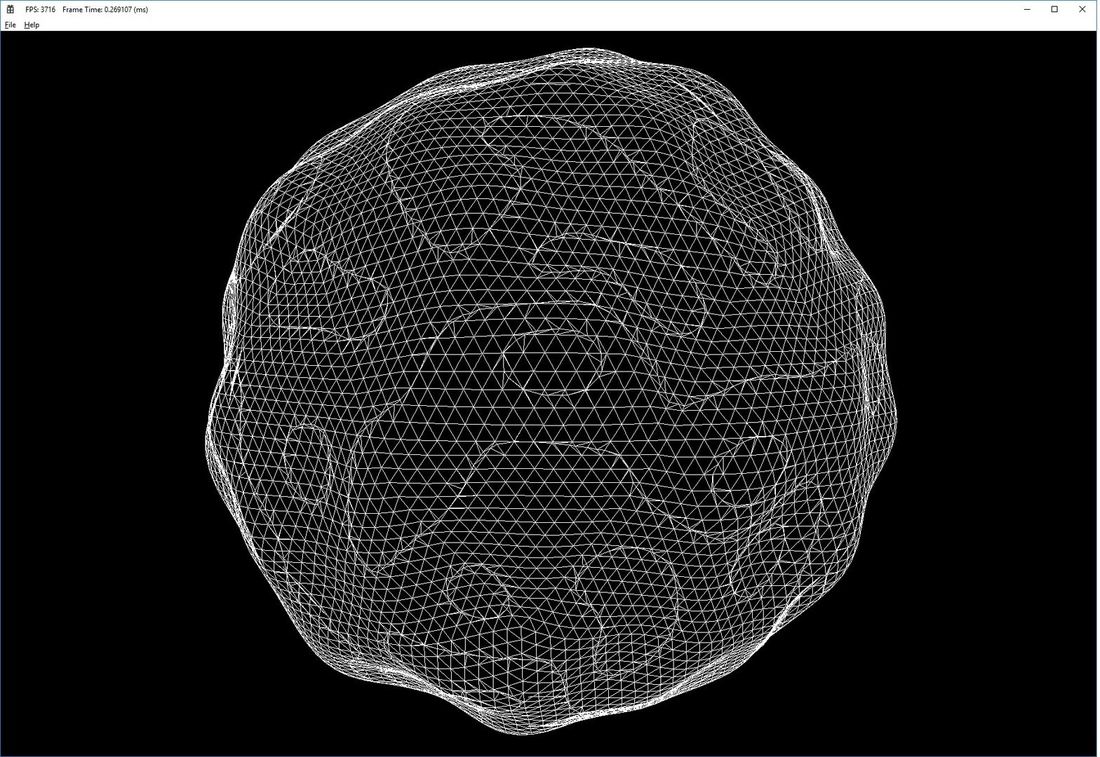After a LOT of bug fixes, and some algorithm changes changes, our octree marching prisms algorithm is now in a much better state. We added a completely new way of determine chunk level transitions, but before discussing it we will first talk a bit more about our voxel octree.
Our octree is very explicit. By that we mean it is built up of actual geometric components. First we have voxel vertexes (not to be confused with mesh vertexes) for the corners of voxels. Then we have voxel edges that connect them. Then we have voxel faces which are made up of a set of voxel edges (either three or four) and finally we have the voxels themselves which reference our faces. Currently we support prismatic voxels. since they make the best looking world, however the lower level constructs are designed to also support the more common cubic voxels. In addition to our octree of voxels, voxel faces are kept in a quadtrees, while voxel edges are organized into binary trees. Everything is pretty much interconnected and there is a reference counting system that handles deallocation of unused objects.
So why go though all this trouble? The answer by doing things this way we can avoid traversing the octree when building meshes using our marching prisms algorithms. For instance, If there is a mesh edge on a voxel face, since that face is referenced by the voxels on either side of it, we can easily connect together mesh triangles generated in both voxels. The same goes for voxel edges. A mesh vertex on a voxel edge is shared by all voxels that reference it. So in short, seamless meshes are built in place with little effort. This is important since meshes will be constantly recalculated for LOD as a player moves around.
This brings us to chunking. As we talked about in our first entry, a chunk is nothing more than a sub-section of the octree. Most importantly we need to know where there are up and down chunk transitions. Here our face quadtrees, and edge binary tress help us out. From the top of any chunk we can quickly traverse the quadtrees and binary trees and tag faces and edges as transition objects. The algorithm is quite simple since we know there will only be one level difference between chunks, and therefore if there is a level difference, one level will be odd and the other even. So we can tag our edges and faces with up to two chunk levels in a 2 element array indexed by the last bit of the chunk level. After going down the borders of each chunk, border objects will now have one of two states. They will be tagged with a single level or a two levels one being one higher than the other. From this we can now generate transition voxels with no more need to look at a voxel's neighboring voxels.
One more note about our explicit voxels, since they are in fact explicit there is no requirement that they form a regular grid. As we said before our world grid is basically wrapped around a sphere which gives us fairly uniform terrain no matter where you are on the globe. Hopefully in he future we can also use this versatility to build trees.
Ok so it's picture time......... We added some 3D simplex nose to get something that isn't a simple sphere. Hopefully in our next entry we will try a multi-fractal.






That's beautiful geometry - i did not expect that from hearing you talking about prisms and octrees. I want to dig caves into this stuff... seems fun!
To make your explanation clear you would need to add some illustrations, maybe in future posts. (I do not get anything )
)